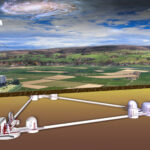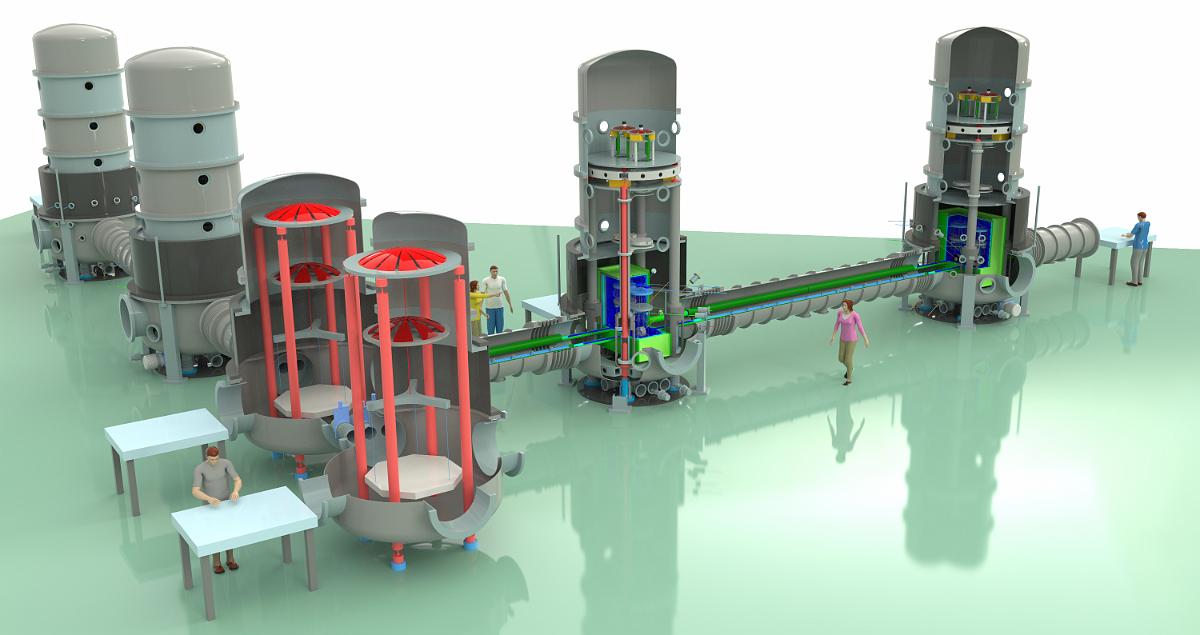
ETpathfinder – the prototype for the Einstein Telescope
In preparation of the next generation of gravitational wave telescopes, a 20-meter prototype, called the ETpathfinder, will be built in Maastricht. Now the first researchers around Prof. Stefan Hild have moved into the hosting building. At the beginning of next year, construction of the prototype for the Einstein Telescope will begin.
The location of the actual Einstein telescope will not be finally decided until 2021, but the Meuse–Rhine Euroregion around the city-corridor of Aachen–Maastricht–Liège, is under consideration. The Einstein telescope, Europe’s next-generation ground-based interferometer, which is more than a billion of euros, will be able to measure gravitational waves with unprecedented precision and range and to gain an insight into the early days of the universe.
To reach this goal new technologies need to be developed and shall be investigated at the ETpathfinder. “It needs to be at least 10 times more sensitive than the current generation of detectors. So we first have to develop the right low-noise technologies. Think of the glass used in the mirrors. To be able to ‘listen’ to gravitational waves, which are actually ripples in space and time, the material has to be cooled to the extreme. That’s not possible with glass, so we’re developing mirrors made of silicon”, Hild explains in an interview with M. van der Linde.
The Prototype ETpathfinder is a true-to-scale model of the Einstein telescope, which will be used to test and optimize new techniques. For this purpose, a former transport hall is converted into a clean room with a low-vibration floor in which two approx. 20-metre-long arms of the interferometer are to be accommodated. The prototype is focused on cryogenic payloads to reach the following science goals:
-
Build a low phase noise interferometry with cryogenic silicon mirrors of up to ~100kg
-
Provide a flexible testbed to explore various combinations of cryogenic temperatures and laser wavelength
-
Investigate the interplay of thermal noise, quantum noise and control noises in the sub 10Hz region
-
Perform various tests of cryogenic issues (liquids vs cryo-coolers; stable control of mirror temperature; contamination handling of mirror surfaces; low power actuators …)
-
Commission of a testbed for new control techniques and sensors
The prototype is partly financed by an Interreg Euregio Meuse-Rhine Project and partly by different funds from the involved Institutes and Institutions. You can find a list of these partners below.
With the construction of the Pathfinder, they hope not only to gain new physical knowledge and experience in technology, but also to better position the Euregio in the decision on the final location of the Einstein telescope and to strengthen cooperation and gravitational wave knowledge in this region.
As mentioned in the roadmap, APPEC strongly supports further actions strengthening the collaboration between gravitational-wave laboratories. It also strongly supports Europe’s next-generation ground-based interferometer, the Einstein Telescope (ET) project, in developing the required technology and acquiring ESFRI status.
List of involved Institutes/Institutions
with funding from the Interreg Programm Meuse-Rhin:
Nikhef, Amsterdam
Katholieke Universiteit Leuven
Universiteit Gent
Universiteit Antwerpen
Technische Universiteit Eindhoven
Universiteit Maastricht
Universiteit Hasselt
Associated Partners:
Université de Liège
Vrije Universiteit Brussel
Fraunhofer Institute for Laser Technology (ILT), Aachen;
Rheinisch-Westfälische Technische Hochschule (RWTH), Aachen
Universiteit Twente (UT), Enschede
Vlaams Instituut voor Technologisch Onderzoek (VITO), Mol
Université catholique de Louvain, Louvain-la-Neuve
Nederlandse Organisatie voor toegepast natuurwetenschappelijk onderzoek (TNO), Delft
Further reading:
Maastricht University: Prototype Einstein Telescope will be housed in Randwyck
Maastricht University: Looking back to the big bang
Aachener Zeitung: Oberirdischer Prototyp für unterirdisches Einstein-Teleskop (German)





